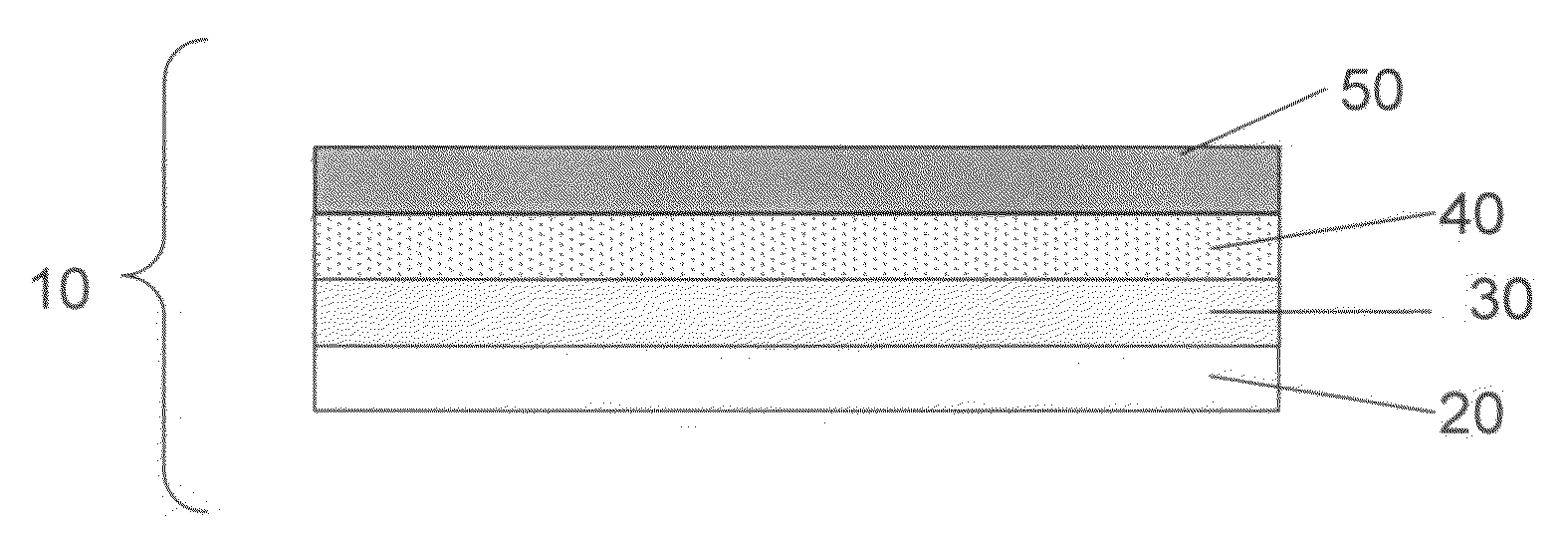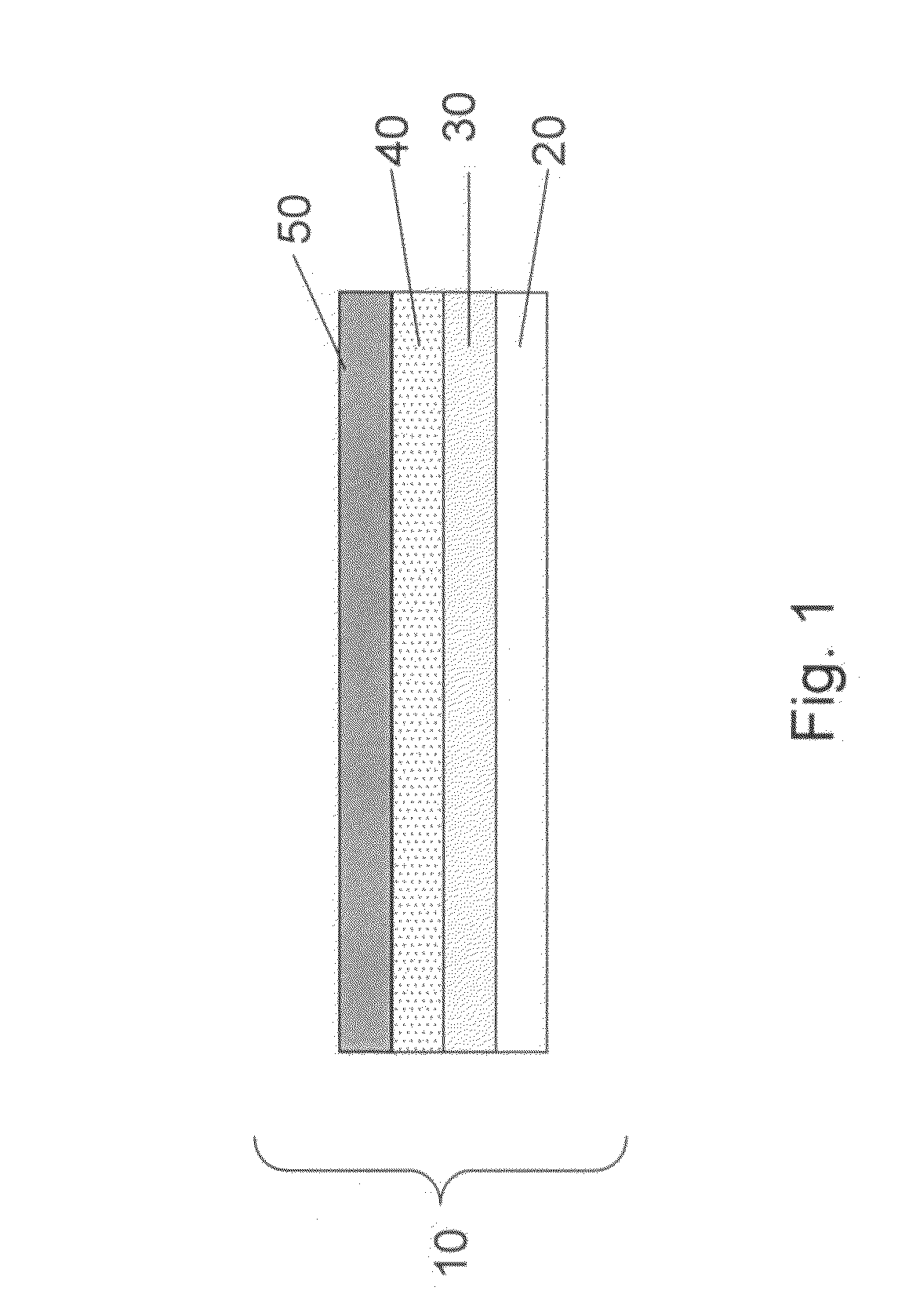Swelling inhibition in batteries
a technology of electrochemical cells and batteries, applied in the direction of secondary cells servicing/maintenance, non-aqueous electrolyte cells, cell components, etc., can solve the problems of poor cell performance and placement of electrochemical cells
- Summary
- Abstract
- Description
- Claims
- Application Information
AI Technical Summary
Benefits of technology
Problems solved by technology
Method used
Image
Examples
example 1
[0066]This example describes a protocol for preparing an electrochemical cell comprising a Li anode, a sulfur cathode, a porous separator, and an electrolyte, according to one embodiment of the invention.
[0067]To prepare the cathode, a mixture of 73 wt % of elemental sulfur, 16 wt % of a first conductive carbon pigment, Carbon XE2, 6 wt % of a second conductive pigment, Ketjenblack®, and 5 wt % of polyethylene powder (grade T1000) dispersed in isopropanol was coated onto both sides of a 6 micron thick carbon-coated aluminum / PET substrate. After drying the coated cathode, the thickness of the film was measured to be about 100 microns, the film being 1549 mm in length and 36.83 mm in width. The sulfur surface loading was 1.58 mg / cm2. The anode used was metallic Li foil, with a total anode thickness of 50 microns, the anode being 1626 mm in length and 41.91 mm in width. The porous separator used was 9 micron Tonen (Tonen Chemical Corporation, Japan).
[0068]In this example, the electroly...
example 2
[0071]A prismatic cell containing a cathode, anode, and porous separator were fabricated using the method described in Example 1.
[0072]In this example, the electrolyte (Electrolyte 2) was prepared by combining 4 wt % lithium bis(trifluoromethanesulfoneimide), 3.77 wt % LiNO3, 42.52 wt % 1,2-dimethoxyethane, 42.52 wt % 1,3-dioxolane, 1 wt % guanidine nitrate, 6.2 wt % Li2S8, and various additives were added at concentrations of 2-10 wt %, as shown in Tables 2-5.
[0073]The cells were discharged at 500 mA to 1.7 V and charged at 315 mA to 2.5 V. Cell capacity was about 2600-2700 mAh. The thickness of the cells was measured during cycling, and the results are shown in Tables 2-5.
TABLE 2Swelling behavior of cells with additives comprising aromatic ethers oraromatic compounds with alkoxy group.Cell Thickness,mmThicknessElectrolyte AdditiveAdditive wt %4 cycles40 cycleschangeControl (No additive)012.9516.6629%1,3-Dimethoxybenzene1010.4511.4710%1,3-Dimethoxybenzene510.4410.904%1,4-Dimethoxyb...
PUM
| Property | Measurement | Unit |
|---|---|---|
| size | aaaaa | aaaaa |
| thickness | aaaaa | aaaaa |
| thickness | aaaaa | aaaaa |
Abstract
Description
Claims
Application Information
 Login to View More
Login to View More - R&D
- Intellectual Property
- Life Sciences
- Materials
- Tech Scout
- Unparalleled Data Quality
- Higher Quality Content
- 60% Fewer Hallucinations
Browse by: Latest US Patents, China's latest patents, Technical Efficacy Thesaurus, Application Domain, Technology Topic, Popular Technical Reports.
© 2025 PatSnap. All rights reserved.Legal|Privacy policy|Modern Slavery Act Transparency Statement|Sitemap|About US| Contact US: help@patsnap.com


